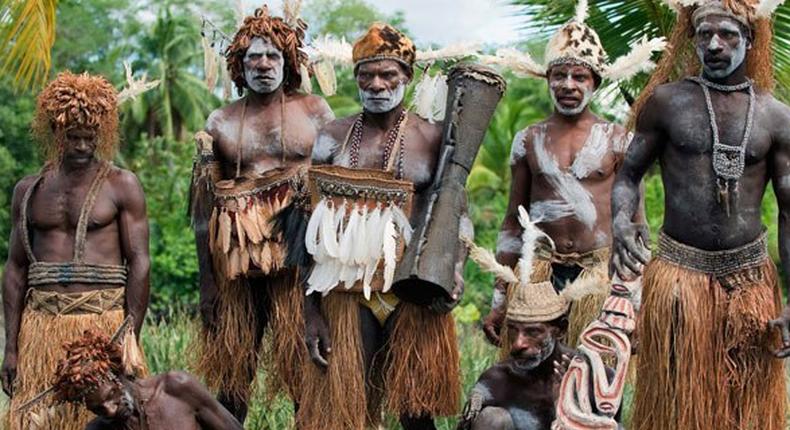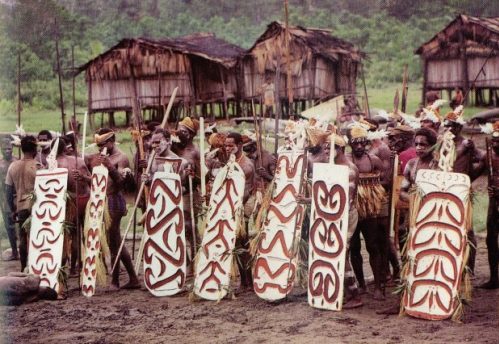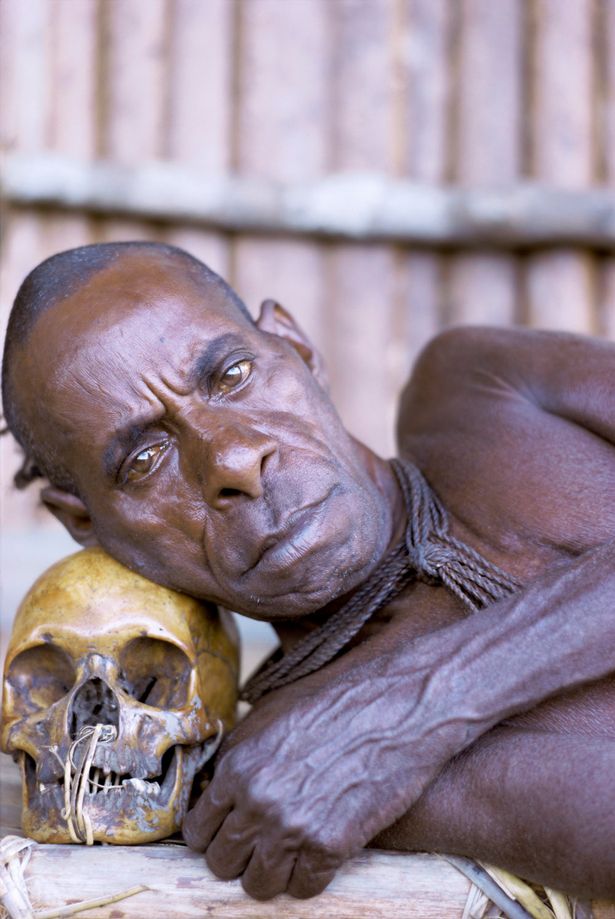
Ekeomah Atuonwu
The Asmat people live in Indonesia’s Papua province, which includes New Guinea. The Asmat call themselves Asmat-ow, which means real people, despite the fact that the meaning of the term Asmat is sometimes disputed. Some think it means man from tree, while her neighbors, the Mimika, claim the name means man-eater.
The Asmat tribe is the most well-known cannibalistic tribe in the world, and just thinking about them makes people frightened.
With over 100 villages and 12 subethnic groups, Asmat’s inhabitants inhabit a mostly undiscovered region. Additionally well known for their wood carving and art, these hunters are prolific.

Until the 1970s, the Asmat tribe did not have regular contact with the outside world. During this time, they were not living in the Stone Age [yet]. This is because stone itself was highly unavailable. It wasn’t until the regular visit of the missionaries [in the 1970s] that they were introduced to knives, axes, and other metal items.
The Asmat are a deeply religious people who believe in the ancestral worship. Their ancestors are represented by wooden canoe carvings and figurines.
Until the 1980s, Asmat men showed their sexual prowess and loyalty to their kinsmen by killing an enemy so they (the kinsmen) can eat. The head was prepared for consumption by baking and scraping off the skin of the head.

This tribe’s members hold wood in high regard since they believe they were created from it. They think there is a direct connection between humans and trees. Since the beginning of time, they have carved incredible objects from wood, including shields, canoes, ancestor poles, sculptured figures, and drums. They have also made contributions to art through their incredibly sophisticated culture.
Since their wood carvings and sculptures are associated with the spirit world and a large portion of their original artwork is symbolic and depicts battle, headhunting, daily life, a love of nature, and reverence for warrior ancestors, their work should be treated with the utmost respect and appreciation.
They have created some of the most wonderful and unique world’s wood sculptures, many of them can be found in museums around the world, some are still on display today at New York’s Metropolitan Museum of Art and others are most coveted by international art collectors.

Wood carving is still a popular tradition among tribe members today, and the group has always had high regard for their woodcarvers. Every year, the Asmat Tribe holds a cultural festival to honor its wood carving heritage, bringing together all the little settlements for an exhibition.
They demonstrate their talents through traditional dances, sailing, weaving, and musical performances. They finish the exhibition with an open auction of their magnificent artworks following the five-day festival.
They value the “fruit” (human head) so highly that they cut it off after burials and use it as a pillow. They hold the view that anyone who passed away unexpectedly was slain by unnatural forces, which is why vengeance is necessary.
They frequently created a ceremonial calendar for headhunting and vengeance missions in order to satisfy the ancestors’ need for justice. The heir of Nelson Rockefeller, Michael Rockefeller, is said to have been murdered among these individuals.
Not only did the Asmat hunt for skulls, but they also revered them. In order to stop evil spirits from entering or leaving the bodies of the deceased, the brain was removed from their skulls, and their eyes and nasal passages were blocked. The Asmat put modified and decorated skulls on display in a dignified location in their large homes.
Besides the fact that the Asmat were head-hunters, they also “hunted for names”. They believed that when they killed a man and ate him, they take his power and become him.

Every person was named after someone deceased, or after a killed enemy.
A child was sometimes given a name only ten years after it was born, and after its village set out to kill a man from an enemy village nearby.
They had to learn the name of the man they killed, and then bring his skull to their village. Only in this way could a person get a name.
Fortunately, the evil reputation of Asmat has become history. The missionaries have done a lot of work in changing this. The central Asmat now even have a written form of their spoken language.




